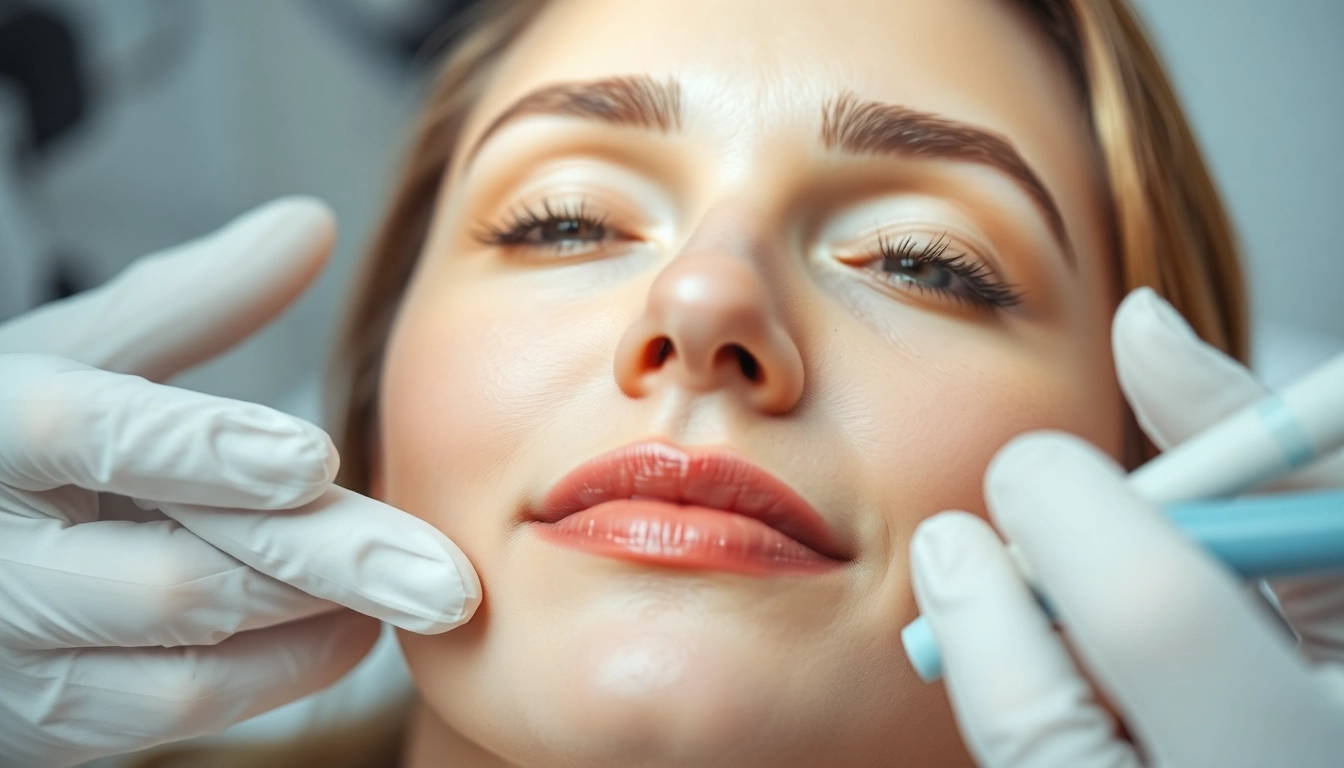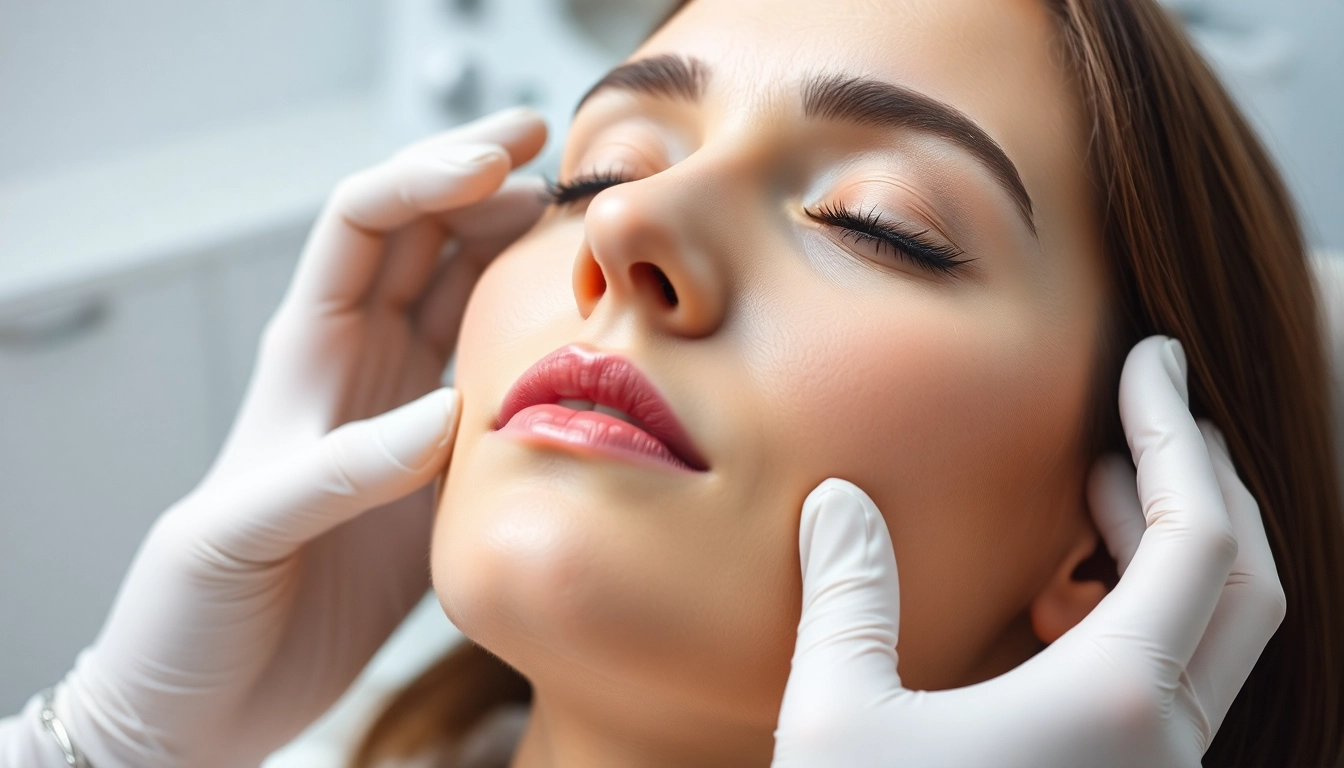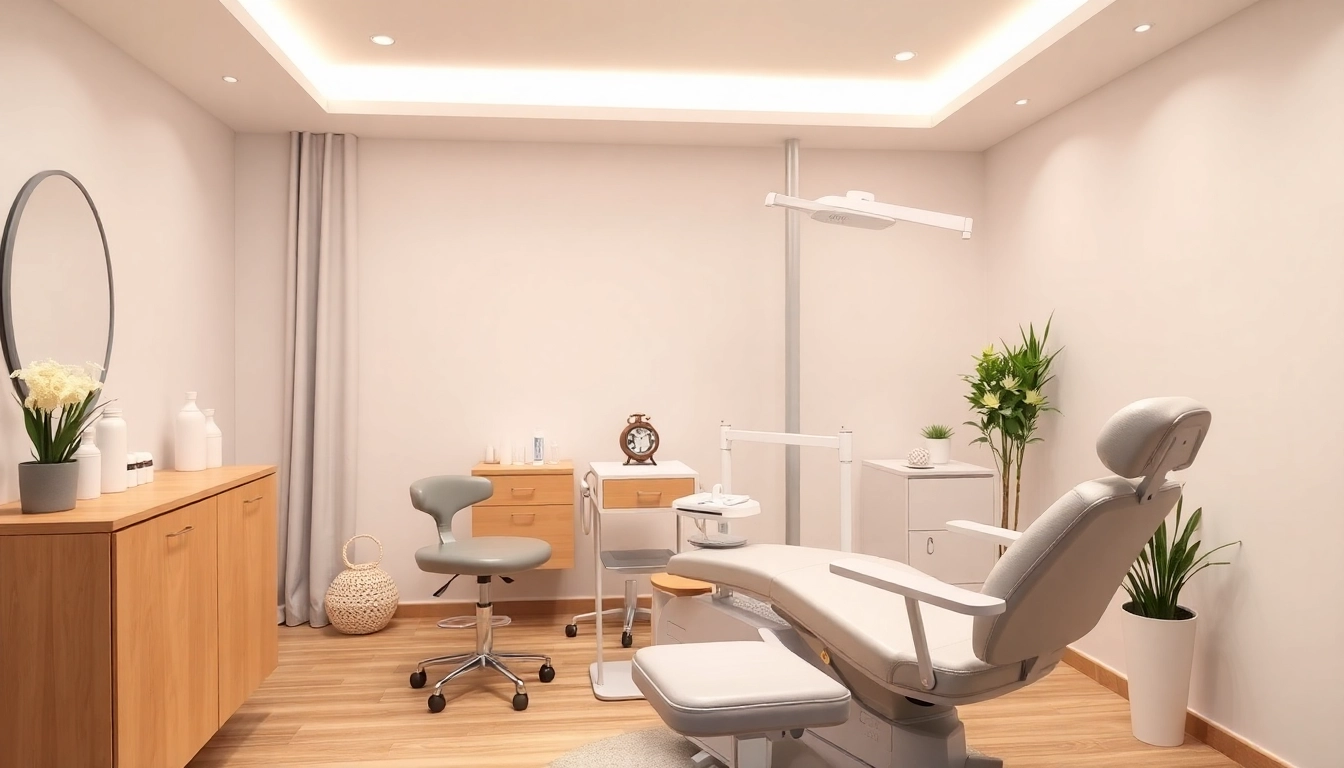Understanding Botox Behandlung
What is Botox?
Botox, short for botulinum toxin, is a neuromodulator derived from the bacterium Clostridium botulinum. This potent neurotoxin is primarily utilized in both medical and aesthetic procedures due to its unique ability to block nerve signals and temporarily paralyze muscles. In the cosmetic world, Botox is commonly associated with reducing the appearance of facial wrinkles, providing a smoother and more youthful appearance. It’s important to note that all treatments should be conducted by qualified professionals in a controlled environment to ensure safety and efficacy. For those looking into this treatment, more insights can be found on Botox Behandlung.
How Botox Works on Wrinkles
Botox works by inhibiting the release of acetylcholine, a neurotransmitter responsible for muscle contraction. When injected into specific muscles, Botox effectively relaxes them, which diminishes the appearance of dynamic wrinkles—those caused by facial expressions such as frowning, smiling, or squinting. The most commonly treated areas include the forehead, between the eyebrows, and around the eyes (crow’s feet). The effects typically begin to appear within a few days after treatment and can last three to six months before requiring a follow-up session.
Popular Uses Beyond Aesthetics
While Botox is predominantly known for its cosmetic benefits, it serves various medical purposes as well. Its applications include treating conditions such as chronic migraines, excessive sweating (hyperhidrosis), and certain eye disorders like blepharospasm and strabismus. Ongoing research continues to explore new therapeutic uses for Botox, potentially expanding its versatility in the medical field.
Benefits of Botox Behandlung
Immediate Aesthetic Improvements
One of the most immediate benefits of Botox treatment is the instant improvement in the overall appearance of one’s skin. Patients often observe a noticeable reduction in the depth and visibility of wrinkles shortly after their treatment. This quick turnaround makes Botox a favored option for those preparing for significant life events such as weddings or public appearances, where looking one’s best is paramount.
Long-Term Skin Care Advantages
Regular Botox treatments can help in preventing the onset of new wrinkles. By consistently relaxing the facial muscles, Botox may help maintain smoother skin over time. Additionally, some studies suggest that Botox can improve skin texture and elasticity, contributing to an overall youthful complexion. The proactive approach to skincare aligns with modern aesthetics that emphasize prevention just as much as correction.
Psychological Benefits of Enhanced Appearance
Enhancing one’s appearance through Botox can yield substantial psychological benefits. Many individuals report improved self-esteem and confidence after receiving Botox treatments. Looking more youthful can positively influence personal and professional interactions, as individuals may feel more dynamic and approachable. The psychological implications of aesthetic treatments are increasingly recognized, emphasizing the importance of mental well-being alongside physical appearance.
What to Expect During the Procedure
Consultation and Assessment
The journey to Botox treatment begins with a thorough consultation with a qualified practitioner. During this initial meeting, the provider will assess the patient’s needs, discuss desired outcomes, and evaluate any medical history that may affect the treatment. Understanding the risks and benefits is crucial and can help in setting realistic expectations. This step is vital in ensuring a tailored approach that aligns with the patient’s aesthetic goals.
The Injection Process Explained
The injection process typically takes less than 30 minutes and can be performed in-office with minimal discomfort. After the consultation, the chosen injection sites will be cleaned and possibly numbed with a topical anesthetic to enhance comfort. The practitioner then injects small amounts of Botox into targeted muscles using a fine needle. Most patients report only minor discomfort, akin to a small pinch. Following the injections, patients are usually advised to avoid lying down or engaging in strenuous activities for a short period to allow the toxin to settle.
Aftercare and Recovery Tips
Recovery from Botox is typically swift, with most patients returning to their daily activities immediately after treatment. However, several aftercare tips can enhance results and ensure safety. Patients are advised to avoid alcohol, excessive sun exposure, and strenuous exercise for at least 24 hours post-procedure. Additionally, gently massaging the treated area or rubbing it excessively should be avoided to prevent the migration of Botox to unintended muscles.
Potential Risks and Considerations
Understanding Side Effects
Like any medical procedure, Botox treatment carries potential risks and side effects. Common side effects include temporary bruising, swelling, headache, and in rare cases, flu-like symptoms. Serious complications can also occur, such as drooping eyelids or asymmetry if the injections are not performed by an experienced practitioner. Patients should be aware of these risks and ensure they are treated by a certified provider to mitigate potential complications.
Who Should Avoid Botox Behandlung?
While Botox is generally safe for many individuals, there are specific groups who should avoid treatment. These include pregnant or breastfeeding women, individuals with neurological disorders, or those with allergies to any of the components in Botox. A detailed medical history review during the consultation can help identify any contraindications.
Long-Term Safety Profile of Botox
Research indicates that Botox has a favorable long-term safety profile when administered correctly. Studies have shown that with proper dosage and regular follow-ups, adverse effects are rare. As the treatment’s popularity continues to grow, ongoing studies aim to deepen our understanding of its long-term effects. This data is crucial for building trust in the aesthetic community and among potential patients.
Finding the Right Provider for Botox Behandlung
Qualities to Look for in a Practitioner
Choosing the right practitioner for Botox treatment is paramount for safety and desired results. Essential qualities include board certification, extensive experience in administering Botox, and a solid reputation among previous clients. Reading testimonials and seeking referrals from trusted friends or healthcare providers can offer insights into a practitioner’s qualifications and style.
Certification and Experience Matters
Ensure that your practitioner is certified and has specific training in cosmetic injectables. Experience is crucial; practitioners who have administered thousands of injections are likely to have honed their techniques and knowledge about facial anatomy, leading to more satisfying outcomes. Checking credentials and asking about training can establish trust before any treatment.
Questions to Ask During Your Consultation
During the initial consultation, patients should feel empowered to ask questions. Important inquiries might include the practitioner’s experience, techniques used, potential side effects, and the expected results of treatment. Additionally, patients should discuss their medical history and any concerns about the procedure. A good practitioner will encourage these discussions and address all queries thoroughly.



